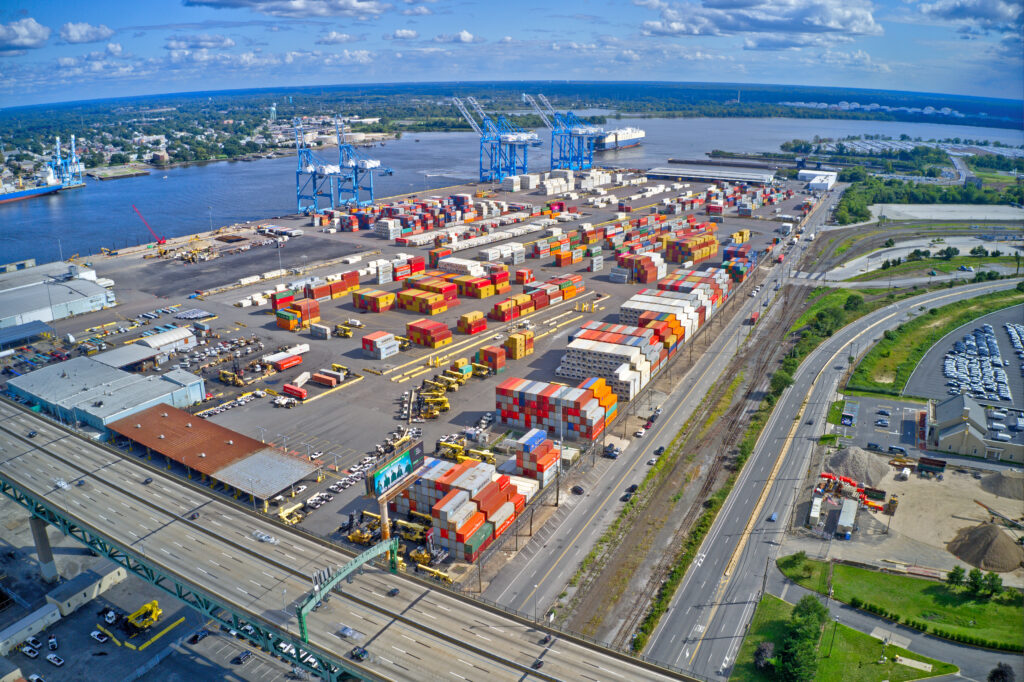The latest news on the East and Gulf Coast port strike is that approximately 50,000 longshoremen have walked off the job, shutting down major ports from New England to Texas. The strike began at midnight on October 1, 2024, after the International Longshoremen’s Association (ILA) and the United States Maritime Alliance (USMX) failed to reach a new contract agreement. The workers are demanding higher wages and stronger job security measures against automation.
This strike is causing significant disruptions in the supply chain, affecting the delivery of goods ranging from produce to auto parts.
For all your international shipping needs during this challenging time, contact PITT OHIO to ensure your goods reach their destinations smoothly and efficiently.
How is this strike impacting businesses and consumers?
The East and Gulf Coast port strike is having significant impacts on both businesses and consumers. For businesses, the strike is causing major disruptions in the supply chain, leading to delays in the delivery of goods such as produce, auto parts, and holiday merchandise. This disruption is estimated to cost the economy up to $5 billion per day.
Consumers are likely to experience shortages of popular products and potential price increases as businesses struggle to manage the supply chain bottlenecks. The longer the strike continues, the more pronounced these effects will become.
How are retailers and manufacturers coping with the strike?
Retailers and manufacturers are employing several strategies to cope with the East and Gulf Coast port strike. Many have been importing goods earlier than usual and shifting shipments to West Coast ports to avoid disruptions. Some are even resorting to expensive air freight options to ensure critical supplies reach their destinations.
Additionally, businesses have been padding their inventories well in advance, anticipating potential delays. These measures are helping to mitigate the immediate impact, but the longer the strike continues, the more challenging it will be to maintain smooth operations.
Here are the top 5 strategies manufacturers and businesses can use to bring products over the ocean despite the East Coast and Gulf Coast port strike:
- Shift Shipments to West Coast Ports: Redirecting cargo to West Coast ports can help bypass the affected areas and keep goods moving.
- Utilize Air Freight: For high-priority or time-sensitive shipments, air freight can be a faster, albeit more expensive, alternative.
- Increase Inventory Levels: Stocking up on critical components and raw materials in advance can help mitigate the impact of delays.
- Explore Alternative Shipping Routes: Using ports in Canada or Mexico and then transporting goods by rail or truck into the U.S. can be an effective workaround.
- Strengthen Relationships with Multiple Suppliers: Diversifying the supplier base and sourcing materials from different regions can reduce dependency on any single port.
These strategies can help businesses navigate the disruptions and maintain their supply chains during the strike.
The East and Gulf Coast port strike, which began on October 1, 2024, has seen around 50,000 longshoremen walk off the job, shutting down major ports from New England to Texas. Businesses are facing delays and increased costs, while consumers may experience shortages and price hikes. To cope, retailers and manufacturers are importing goods earlier, shifting shipments to West Coast ports, using air freight, increasing inventory levels, and exploring alternative shipping routes. These strategies aim to mitigate the impact and maintain supply chains during the strike. Overall, the strike is creating widespread economic challenges and necessitating swift adaptation by businesses to manage the disruptions.
For all your international shipping needs during this challenging time, contact PITT OHIO to ensure your goods reach their destinations smoothly and efficiently.




